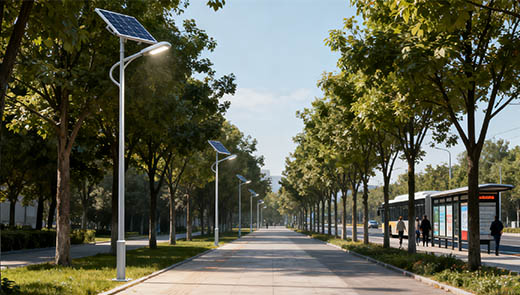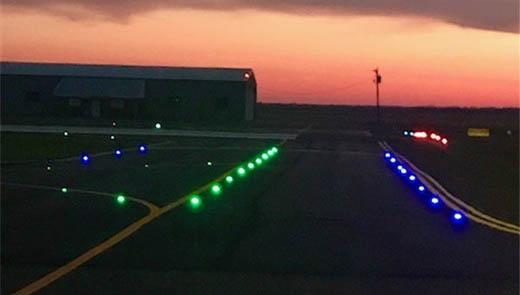What Are the Best Street Lights for Highways in 2025?
A report reveals that nearly half of all fatal traffic accidents in the United States occur at night, underscoring the critical role of highway nighttime lighting in traffic safety. As highway traffic volumes increase and extreme weather events become more frequent by 2025, traditional street lights struggle to meet modern highway demands for “high reliability, low energy consumption, and intelligent adaptation.” This article clarifies key selection criteria for LED street lights for highway management agencies and engineering procurement entities, analyzes the advantages of solar LED street lights, and supports informed decision-making.
What is Highway Lighting?
Highway lighting, simply put, refers to illumination systems installed along road edges or in parking areas. Its core purpose is unequivocal: to provide a safe passage environment for all road users, including drivers and pedestrians. It serves not only as a “safety measure” but also as a key factor in enhancing nighttime traffic comfort and convenience. By reducing “information uncertainty,” highway lighting effectively improves traffic efficiency—for instance, helping drivers clearly assess road conditions ahead and enabling pedestrians to identify their walking paths, thereby preventing issues caused by poor visibility.
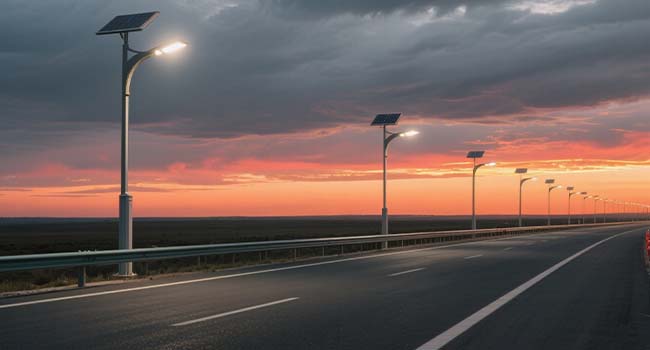
Exploring the Technical Limitations of Traditional Street Lights
Safety Hazards of Traditional Street Lights
Traditional street lights exhibit numerous shortcomings in ensuring road safety, posing significant risks during nighttime travel. Under adverse weather conditions like rain or fog, the illumination efficiency of conventional light sources plummets. This directly obscures road markings and makes pedestrians and cyclists difficult for drivers to detect, thereby increasing accident probabilities. Simultaneously, dim lighting conditions continuously strain drivers' eyes. Prolonged driving in such environments can slow reaction times, indirectly raising the incidence of traffic accidents.
Technical Limitations of Traditional High-Pressure Sodium (HPS) Lamps
As a common type of traditional street light, HPS lamps exhibit distinct technical limitations, specifically in the following three areas:
Low Energy Efficiency: Their lumens per watt (lm/W) output is significantly lower than LED lights. Achieving equivalent illumination requires installing more fixtures. This not only increases equipment procurement and installation costs but also leads to substantial energy waste, failing to meet modern highway lighting's energy-saving requirements.
Poor Color Rendering: Their Color Rendering Index (CRI) is low, preventing accurate reproduction of object colors. In nighttime highway scenarios, drivers struggle to clearly distinguish road conditions through the light, such as the color of pedestrians' clothing or the type of obstacles on the road. This hinders timely and accurate driving decisions, increasing traffic risks.
Uneven Light Distribution and Severe Glare: The light distribution lacks rationality, resulting in overly bright areas and insufficiently lit areas, while also generating excessive glare. This glare directly interferes with the driver's vision, causing visual fatigue or temporary visual impairment. It obscures critical information like road markings and roadside obstacles, adversely affecting safe driving and contradicting the core objective of highway lighting to ensure safety.
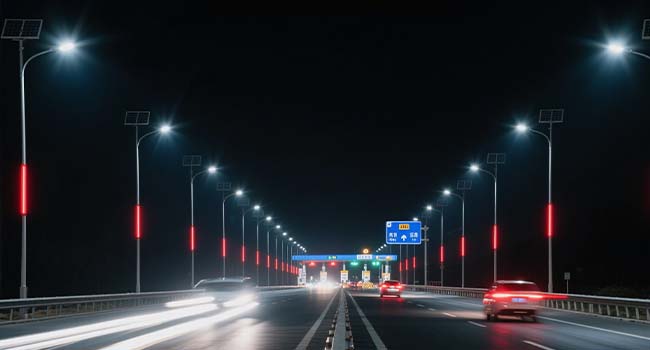
2025's Optimal LED Street Lights for Highways
Enhancing Safety
Solar-powered LED street lights excel in improving highway safety and reducing nighttime accident rates. Combining efficient LED technology with smart sensors, they automatically adjust illumination intensity based on ambient brightness. This ensures road markings and signage remain clearly visible regardless of changing light conditions, providing drivers with stable visibility.
Research indicates that well-lit highways experience a 30% lower nighttime accident rate compared to poorly illuminated sections. Solar LED street lights, with their superior illumination, effectively reduce accident likelihood. Furthermore, powered by solar energy, solar LED street lights operate independently of the grid. They continue functioning even during power outages, preventing lighting interruptions that could threaten highway safety under extreme conditions.
Exceptional Environmental Adaptability
When confronting harsh weather conditions, solar LED street lights demonstrate exceptional environmental adaptability. Featuring an integrated construction that significantly reduces connection points between components, this design enables them to withstand extreme weather such as torrential rain, heavy snow, strong winds, and significant temperature fluctuations, ensuring reliable operation under all adverse conditions. Additionally, these lights incorporate an advanced battery management system that effectively handles consecutive overcast days. Even during prolonged periods of insufficient sunlight, they maintain stable illumination, meeting the 24-hour safety lighting requirements for roadways.
Smart Control
Solar LED street lights feature intelligent control capabilities, seamlessly adapting to modern traffic management needs. Sensors detect vehicle movement, automatically increasing illumination during peak traffic hours to ensure clear road visibility. During off-peak periods with low traffic, brightness is appropriately reduced to conserve energy. This dynamic dimming mode perfectly balances safety and energy consumption.
Additionally, solar LED street lights can integrate with traffic management systems to adjust lighting modes based on real-time traffic conditions. For instance, maintaining high brightness on congested sections while reducing intensity on less-traveled areas. This feature effectively minimizes glare and driver fatigue caused by light fluctuations, making it particularly suitable for long-distance highway illumination.
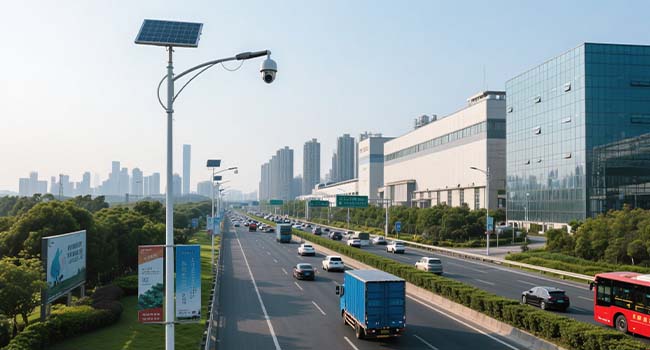
2025 Highway LED Street Light Selection Criteria
Performance Metrics
When selecting highway LED street lights in 2025, prioritize performance metrics including “high lm/W energy efficiency,” “CRI≥80,” and “anti-glare design.” High lm/W efficiency delivers greater illumination at equivalent power consumption, significantly reducing energy usage. CRI ≥ 80 ensures superior color rendering, enabling drivers to clearly discern road details; anti-glare design prevents light interference with driver vision, safeguarding visibility and driving comfort.
Reliability
Reliability is a critical factor in selecting highway LED street lights. Opt for products with an IP65 or higher protection rating and certification for extreme weather resistance. IP65 or higher protection effectively prevents dust and water ingress, safeguarding normal operation. Products certified for extreme weather withstand harsh conditions, minimizing failures and ensuring continuous support for highway safety.
Smart Features
Comprehensive smart functionality directly impacts user experience and management efficiency. Key features to consider include dynamic dimming, remote monitoring, and battery status alerts. Dynamic dimming adjusts brightness based on actual conditions, further conserving energy; remote monitoring enables managers to track fixture status in real time, promptly identifying and resolving issues; battery status alerts provide advance notice of remaining charge and health, facilitating timely replacement or maintenance to reduce long-term upkeep costs.
Cost-Effectiveness
When selecting highway LED street lights, evaluation should extend beyond initial investment to consider the comprehensive cost structure: “initial investment + operational and maintenance expenses + lifespan.” Although solar LED street lights may have a relatively higher initial investment, they eliminate electricity bills and grid installation costs over the long term. With a lifespan exceeding 10 years—far surpassing traditional street lights—their overall economic benefits prove significantly more substantial, making them a more cost-effective choice.
By 2025, optimal highway LED street lights must meet three core requirements: safety and reliability, superior energy efficiency, and intelligent adaptability. Solar LED street lights emerge as the optimal solution due to their outstanding advantages in enhancing safety, withstanding harsh weather, and enabling smart control. They provide highway users with a safe and comfortable lighting environment while helping management entities reduce costs and improve efficiency. Highway management departments and engineering procurement entities are advised to deploy this system early to reap safety and cost benefits. For inquiries, customized solutions are available. As intelligent transportation evolves, solar LED street lights will integrate deeply with 5G and AI, becoming core infrastructure for “smart highways” and propelling road transportation toward safer, smarter, and greener development.


